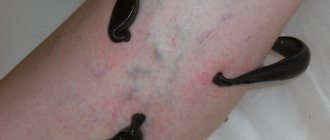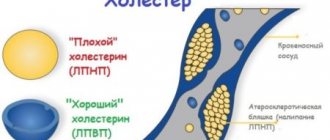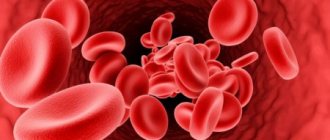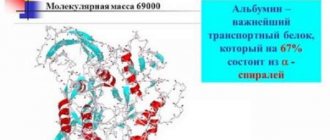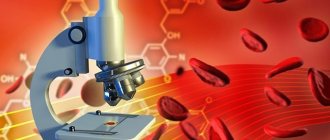What is ILBI and its features?
Intravenous laser blood irradiation is a painless procedure performed by intravenous injection of a LED through which the laser beam occurs. Safety is determined by the effect of radiation only on blood cells, without affecting the tissue of the vessel walls.
ILBI 100% eliminates infection, since it does not require blood extraction from the body and the use of blood replacement solutions.
The essence of healing by irradiation
When defining a term such as “ILBI”, experts, when explaining what it is, say that it is a special unique procedure that makes it possible to influence cellular and microcellular structures in order to restore them and improve basic functions.
Under the influence of radiation, the internal tissue environment is normalized, its damage disappears, and pathological processes gradually begin to cease. At the same time, no harmful influences penetrate into the human body. Everything is built on the fact that self-regulation is triggered.
Nowadays, a person spends all day in the range of a cell phone, the electromagnetic field of a computer, gasoline vapors, radiation from a TV, exposure to microwave ovens, and adverse environmental influences.
Therefore, laser blood purification is necessary; too many negative agents affect modern man. Constant nervous tension also significantly affects the conditions for cell mutation and stimulates the release of large amounts of hormones.
Many people suffer from allergic reactions due to negative influences on their immune system.
Intravenous laser blood purification is carried out by introducing an optical fiber into a peripheral vessel through which irradiation occurs. This process significantly speeds up the patient’s recovery, improves his well-being and reduces the risk of relapses and complications after illnesses.
Any human organ is washed with blood and therefore laser therapy will help restore it to health. There is another way to do it. For those who suffer from venous insufficiency, who are not suitable for the intravascular method, have undergone chemotherapy, or have another prescription from the attending physician, percutaneous exposure is used. It does not carry any pain, discomfort or risk of possible complications.
Mechanism of action on the body
The mechanism of action of ILBI is based on the ability of laser radiation to change the electrical charge of ions of blood elements at four main levels:
- structural elements of blood;
- blood, which is biological tissue, including formed elements and plasma;
- organs and tissues;
- system level, activated by the instantaneous response of adaptation systems responsible for maintaining the values of important functional quantities in the body.
Light photons from a laser beam correct malfunctions in homeostatic mechanisms. Due to this, chronic pathological processes are activated and eliminated.
The principle of laser action on blood cells is based on the affinity of hemoglobin molecules for light particles in the red spectrum. Therefore, it is hemoglobin that “picks up” and transports photons along the bloodstream.
“Reset” of photons occurs only in a pathologically modified area, where the level of metabolism deviates from the required level. In it, the light particle becomes a catalyst for biochemical processes and a source of energy. Taken together, this mechanism makes it possible to eliminate the resulting pathology.
This temporary conversion of the structure of substances activates regenerative processes in tissues, reduces blood viscosity, increases the oxygen content coefficient and accelerates its flow to the cells of the whole body.
ILBI, the indications and contraindications for which have been carefully studied by specialists for several years, is a reversible reaction. Therefore, after the end of the procedure, the molecules of the structural units of the blood are reversed to their original state.
An important factor in the use of ILBI is the absence of the introduction of foreign agents into the body. This method is fundamentally different from drug therapy, allowing you to avoid a number of side effects.
Efficiency of supravenous laser irradiation of blood
Most often, the NLBI procedure is used to treat any diseases of the circulatory system. Using infrared rays on the skin, effective therapy for diseases of the circulatory system is carried out. This procedure is aimed at improving the condition of the blood, stabilizing the composition and structure of the bloodstream.
The effectiveness of the laser irradiation procedure:
- supravenous laser effectively removes toxins from the circulatory system and reduces cholesterol levels;
- removes excess water and reduces swelling;
- accelerates cell metabolism;
- accelerates blood clotting, reduces the risk of thrombosis;
- destroys pathogenic microorganisms and bacteria;
- eliminates inflammatory reactions inside the body;
- regenerates tissues and cells;
- normalizes fat metabolism.
- the effect of destroying allergens in the blood;
- antiviral and antibacterial effect – increases the protective function of the immune system;
- when exposed to the pancreas, an antienzyme effect appears;
- stimulates a woman’s hormonal levels, helps in the functioning of the female reproductive system, balances the functioning of the thyroid gland;
- when localized in the cardiovascular system, NLBI relieves vascular spasms, expands the walls, and resolves small blood clots that have formed.
In addition, the NLBI procedure improves lung function and destroys bacteria in the bronchopulmonary system, improves lung function and relieves intoxication.
Read on topic: Methods for cleaning blood at home using folk remedies
Benefits of the method, therapeutic effects
Positive restorative effects of ILBI:
- increase in the diameter of blood vessels;
- improvement of blood circulation in peripheral vessels;
- elimination of inflammation by lowering the level of C-reactive protein;
- pain relief;
- an increase in the number of phagocytes, lymphocytes and immunoglobulins IgA, IgM, IgG in the blood serum;
- increasing the level of nonspecific resistance of the body;
- normalize lipid, sugar and cholesterol levels;
- relieving intoxication and accelerating the removal of metabolic products from the blood;
- accelerating the delivery of oxygen and nutrients to tissues;
- strengthening the body's resistance to foreign agents;
- increase in the coefficient of antioxidant activity of the blood;
- stimulation of regeneration processes of damaged cells and tissues;
- stimulation of cell DNA restoration after radiation exposure;
- restoration of all types of exchange.
This manipulation can be used as a prophylaxis for infectious and systemic diseases, for their treatment as part of complex therapy, as well as to speed up recovery in the postoperative period.
Pathologies that are targeted by the therapeutic effect of intravenous laser irradiation:
- dermatitis of varying severity;
- dysfunctions of the gastrointestinal tract;
- severe heart pathologies;
- hormonal abnormalities;
- ENT diseases;
- infectious diseases of the oral cavity;
- diseases of the genitourinary system;
- mental disorders.
With the help of ILBI, withdrawal symptoms are effectively eliminated after complete cessation of alcohol or psychotropic drugs. This occurs due to enhanced removal of toxic decay products, stimulation of regenerative processes and pain relief.
Indications for use
Intravenous laser therapy has the following indications:
- acute and chronic inflammatory processes of different localization
- complications after undergoing radiation therapy;
- postoperative period to accelerate wound healing and prevent complications;
- period of exacerbation of bronchial asthma;
- problems with blood clotting, tendency to form blood clots;
- recurrence of gastric ulcer after surgery;
- acquired lymphostasis, cerebrovascular insufficiency;
- consequences of burns;
- skin wounds with diabetes that do not heal for a long time;
- immunodeficiency conditions and dermatological pathologies.
Additionally, the technique is prescribed during the rehabilitation period after injury or surgery. It is an addition to physical therapy and drug treatment. It is used as a general strengthening procedure to stimulate the defense mechanism and increase resistance to various external irritants. Indicated for people who work in hazardous industries.
You may be interested in: Bioresonance therapy treatment
The procedure is most widespread in surgery:
- purulent wounds and ulcers;
- cholecystopancreatitis and paraproctitis;
- pain syndrome in the postoperative period;
- vascular diseases;
- anal fissures, hemorrhoids;
- fractures, open injuries;
- phlegmon, abscess, infiltrates.
In gynecology, it is used for complex therapy of benign formations of the uterus, for inflammation of the pelvic organs and infertility. In urology, indications include renal failure, chronic prostatitis, urethritis, pyelonephritis and glomerulonephritis.
In neurology it is used for the treatment of waste and neurosis. It is used to relieve pain in case of nerve inflammation, radicular syndrome, migraine and VSD.
In ENT practice it is used in cases of sinusitis, sinusitis, tonsillitis, pharyngitis and vasomotor rhinitis. In dermatology, indications are allergic dermatosis, psoriasis, lichen planus, atopic dermatitis.
Benefits of laser blood purification:
- painlessness and complete safety;
- no risk of infection;
- there is no need for pain relief;
- wide range of applications;
- efficiency and speed.
Indications for blood purification with laser irradiation
The ILBI procedure is used in all areas of medicine.
| Field of medicine | Pathologies |
| Surgery | Fractures, open wounds of various etiologies, paraproctitis, hemorrhoids, abscesses, phlegmon, burns, trophic ulcers, damage to blood vessels. |
| obstetrics and gynecology | Inflammatory processes in the pelvic organs, infertility, benign neoplasms in the uterus, gestosis, endometriosis. |
| Urology | Hemodialysis, pyelonephritis, chronic inflammation of the scrotal organs, prostatitis, urethritis, chronic renal failure. |
| Cardiology | Myocardial infarction, angina pectoris, heart defects, ischemia, arterial hypertension. |
| Neurology | Multiple sclerosis, epilepsy, vegetative-vascular dystonia, encephalopathy, chronic fatigue syndrome. |
| Dermatology | Vasculitis, herpes, psoriasis, erysipelas, acne, eczema, dermatophytosis, atopic dermatitis. |
| Gastroenterology | Obstructive jaundice, gastric and duodenal ulcers, cirrhosis, cholecystitis, pancreatitis, poisoning, intestinal obstruction. |
| Dentistry | Periodontitis, purulent inflammation in the jaw area. |
| Endocrinology | Diabetes mellitus, autoimmune thyroiditis. |
| Psychiatry | Dependency syndrome, schizophrenia, certain forms of psychosis. |
Contraindications
ILBI, the indications and contraindications for which are taken into account by the doctor when prescribing a physiotherapy procedure, is strictly prohibited in the presence of the following pathologies:
- malignant neoplasms;
- active tuberculosis;
- syphilis;
- infectious diseases in the acute phase;
- hemorrhagic stroke;
- hyperthyroidism;
- hypotension;
- blood clotting disorder;
- anorexia;
- glaucoma;
- acute renal and liver failure;
- eye diseases of an infectious nature in the acute stage;
- fever.
Laser irradiation is prescribed during pregnancy and lactation. Menstruation is also not a contraindication for blood purification, but doctors advise refraining from the procedure on these days to avoid an increase in the amount of discharge.
What is laser blood purification used for?
The prescription of therapy will largely depend on the recommendations of the attending physician. Not every patient will agree to undergo the procedure because of its high cost. Laser blood purification can be used for the following purposes:
- Accelerating the body's recovery after illness (including mental illness).
- Reducing the rehabilitation period that follows laser resurfacing and chemical peeling.
- Improving the general condition of a person, relieving muscle tension after intense physical activity.
- Laser blood purification is included in the indications for chronic fatigue and the symptoms associated with it.
- Preventing the formation of keloid scars.
- Improvement of the body before and after surgery.
- Extension of remission after treatment of chronic diseases.
Devices for ILBI
ILBI, which has indications and contraindications, can be performed using portable and stationary devices, both at home and in an outpatient setting.
- MILTA-F-5 BIO. Portable device for home use with adjustable power function. A wide range of functions, a minimum number of age restrictions, operation from the network and in autonomous mode.
- MILTA-F-5-01 A. Differs from MILTA-F-5 BIO in lower power and fixed pulse frequency.
- MILTA-F-5-01. It is an analogue of MILTA-F-5-01 A, but does not have a built-in battery.
- Lasmik-ILBI + CL-ILBI. A therapeutic irradiation device equipped with a continuous radiation head. The emitting power is 2 mW and the wavelength is 635 nm.
- Lasmik-01. Mobile two-channel unit, to which it is possible to connect 2 emitting heads.
- Lazmik-03. Representing an analogue of Lamik-1, it has an additional channel for vacuum.
- Matrix-ILBI + CL-ILBI. A single-channel device that operates only in continuous mode with a radiation power of 2 mW, at various fixed frequencies.
- Matrix-Urologist 3. Three-channel device operating in various modes, with a pulse frequency from 10 to 3000 Hz.
All devices are mobile and do not require rigid fixation or the use of additional devices.
How does the session work and how long does it last?
Depending on the diagnosis, a course of laser blood irradiation includes from 5 to 15 procedures, which can be performed daily or every other day. The duration of the first session is no more than a quarter of an hour. In the future, this time gradually increases, reaching 30-50 minutes.
To perform the procedure, the patient lies back on the couch and relaxes.
Then the specialist acts according to the exact algorithm:
- The hand on which large blood vessels are better visible is freed from clothing.
- The needle insertion site is treated with an antiseptic solution.
- The device indicator is fixed just above the wrist.
- A tourniquet is applied to the middle of the shoulder.
- The patient intensively squeezes and unclenches his palm several times.
- A catheter is inserted into the vein.
- The tourniquet is removed, the palm relaxes.
- The device is turned on and the necessary parameters are set.
- After the end of the irradiation time, the device turns off automatically.
The patient experiences minor discomfort only when the needle is inserted into the vein. After turning on the laser, no unpleasant sensations bother him.
A repeat course of this physiotherapy can be carried out after six months.
Laser blood purification procedure
Only a doctor can prescribe laser blood purification, having previously diagnosed one of the pathologies considered indications for this type of therapy. Before the procedure begins, a series of examinations are necessarily carried out to identify existing contraindications; when there are none, treatment begins.
Execution procedure:
- The patient assumes a horizontal position lying on his back.
- The hand is completely freed from clothing, and the laser injection area is treated with an antiseptic.
- A laser device indicator is attached to the top of the wrist.
- The area above the elbow is tightened with a tourniquet and a catheter is inserted into the vein; after insertion, the tourniquet is removed.
- The laser device is started for 30 – 60 minutes based on the purpose of therapy.
- The catheter is removed and the puncture site is treated with an antiseptic.
The procedure can be performed every day, every other day, depending on what the doctor decides. The course consists of at least 5 sessions, with a maximum of 10. Repeated treatment is possible only after 2 - 3 months.
Blood purification device MATRIX-ILLOK
A special device is used to perform intravenous laser therapy. The equipment may differ in different clinics, since the market provides a wide selection of these products, for example, it could be a device:
- LASMIK-ILB;
- MATRIX-ILLOK.
The average weight of the units is about 1.5 kg, the dimensions are small. The devices operate in continuous laser radiation mode, delivering a wave from 365 to 808 nm. The devices are equipped with time task timers. During the procedure, disposable light guides with needles are used, capable of delivering light of different shades: red, blue, green.
The cost of laser cleansing depends primarily on the status of the clinic where the procedure will take place and on the qualifications of the specialist performing the work. On average, they pay from 500 to 1,500 rubles for 1 session.
Note! Laser blood purification does not cause side effects except short-term surges in blood pressure and slight dizziness, which appear immediately.
Carrying out in children
ILBI, the indications and contraindications for which allow it to be used to increase immunity in children, treats both certain diseases and accelerates recovery as part of complex therapy.
The safety and effectiveness of the method gives doctors reason to prescribe laser irradiation of a child’s blood for a whole range of pathologies.
- Chronic tonsillitis: relieving symptoms of intoxication and pain, reducing regional lymph nodes, accelerating the time of sanitation of almond laculae.
- Rhinosinusitis: thinning and facilitating the outflow of exudate, relieving swelling of the mucous membrane of the nasal cavity and paranasal sinuses, eliminating inflammation.
- Bronchial asthma: eliminating attacks of suffocation and dry cough, reducing shortness of breath and wheezing, restoring the ability to tolerate acceptable physical activity. By the end of the course of laser physiotherapy, the children experienced normalization of sleep and emotional state, and sleep was restored.
- Recurrent bronchitis: improvement in sputum discharge, reduction in the number of coughing attacks, disappearance of harsh wheezing in the lungs, restoration of blood counts.
- Atopic dermatitis: reducing skin itching and the volume of infiltration foci, relieving hyperemia, improving the psycho-emotional state by restoring proper sleep.
- Vegetative-vascular dystonia of all types: improving sleep quality, relieving attacks of anxiety and irritability, increasing the level of performance and assimilation of received information.
- Biliary dyskinesia: elimination of pain and signs of dyspepsia, restoration of appetite, normalization of stool, restoration of emotional stability and performance.
- Enuresis and neurogenic bladder dysfunction: reduction and complete cessation of cases of daytime and nighttime incontinence, reduction in the number of urinations with an increase in a single portion of urine.
Unlike adults, the duration of an ILBI session for children is no more than 5-7 minutes. The duration of the course varies from 10 to 12 procedures.
What is better – ILBI or ozone therapy?
Ozone therapy is a physiotherapeutic procedure based on the intravenous administration of ozone, which is a strong oxidizing agent and antiseptic.
It has the following effects on the human body:
- analgesic;
- vasodilator;
- antibacterial;
- antifungal;
- antiviral;
- antitoxic;
- healing;
- anti-inflammatory;
- immunostimulating.
By thinning the blood, ozone accelerates the transport of nutrients and oxygen to all cells of the body.
To carry out the procedure, the oxygen-ozone mixture is dissolved in physiological solution or the patient’s blood at a certain concentration, and then it is injected intravenously.
Despite the abundance of positive factors, compared to ILBI, ozone therapy has a number of disadvantages:
- The introduction of a pure gas mixture can lead to air embolism of blood vessels and lead to death.
- An incorrectly calculated (inflated) dose of the drug provokes the release of active oxygen radicals, which destroy the cell membranes of healthy cells, accelerate the aging process, and contribute to the development of malignant tumors.
- Even a slight overdose can cause intoxication, difficulty breathing, damage to the mucous membranes of the eyes, mouth and genitals, as well as give impetus to the development of leukopenia.
Given the general similarity of these methods, it should be noted that ILBI is safe and can be used for children.
How does the NLBI procedure work?
The procedure for conducting irradiation: all NLBI sessions are strictly controlled by a doctor, the duration and frequency of courses are prescribed based on the individual characteristics of the patient and his diagnosis. The duration of one such irradiation is usually 30-40 minutes, with the exception of young children and the elderly, for whom the duration of the session is reduced significantly.
- the patient is in a separate room;
- laser radiation is placed directly above the blood vessel in the crook of the elbow;
- to obtain greater effect from the procedure, apply laser pressure to the skin;
- The laser power is selected according to the indicators.
Read on topic: How to quickly cleanse your blood of alcohol
The procedures are carried out every other day, for 14 days - this is the average course. This procedure is absolutely painless for the patient and does not cause any discomfort.
Cost of ILBI
In Moscow clinics, the cost of one ILBI procedure varies from 500 to 1900 rubles.
The criteria that determine the price are:
- location of the medical facility;
- blade status;
- professionalism and experience of specialists;
- equipment quality;
- duration of the procedure (direct dependence).
Most clinics provide discounts when paying for the entire course of laser physiotherapy at once.
It is worth clarifying whether the price of ILBI includes the services of a physiotherapist who conducts a preliminary examination, identifying the patient’s indications and contraindications for the procedure.

